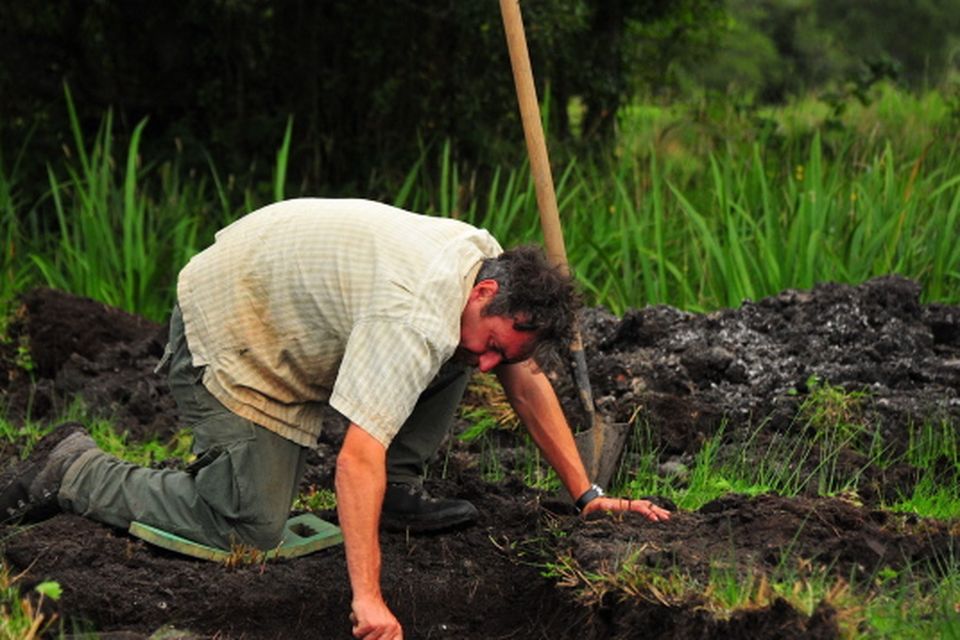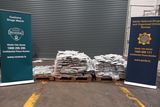Ancient monastic find could be next ‘Clonmacnoise’
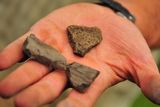
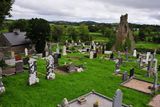
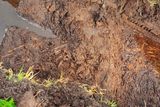

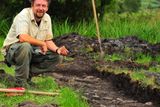
Archaeologists have uncovered an ancient monastic settlement of ‘huge national importance’ during project work for a church car park.
The treasure trove of discoveries in just 48 hours is set to put a boggy field beside an old rural parish church on the archaeological map of Ireland.
Expert Mick O’Droma compared the find in Co Donegal this week to the settlement at Clonmacnoise.
The field beside the Drumholm Church of Ireland graveyard, near the village of Ballintra, is set to be classified a national monument as a result of just two days' excavation work.
Archaeologist Mick moved onto the site on Monday after being commissioned by the Anglican parishoners to survey the one-acre plot as part of a planning application for a car park and cemetery extension.
“We had mapped the area from above ground, taking pictures and readings and I could see then that it could be exciting,” said the expert from Wexford-based Wolfhound Archaeology.
“When we cut five exploratory trenches to take a closer look it became clear very quickly that we were standing on the remains of a early Christian settlement, probably from around the 7th century.
“The exterior walls of the site are clearly there and there is what could be the remains of a round tower on one part of it. I can’t over-state the national importance of this, it is very very exciting.”
Legend has it that St Ernan, nephew of the late 6th century St Colmcille, was buried in the Drumholm area.
“It is very likely we have found the monastic site where Ernan was based,” said Mick.
A Neolithic axe was discovered two fields away in the 1920s close to an ancient cairn.
“This site beside the old church and graveyard dates back 1300 years and we know from previous discoveries in the area that there has been human activity going back to at least 5,800BC,” he said.
And yesterday he made another discovery in the church field which had this archaeologist even more excited.
He produced two pieces of pottery found in one excavated trench – one from the gaelic tradition and one from the Anglo-Norman tradition.
“We know from the Annals of the Four Masters that the English arrived here at Drumholm and settled with the O’Connors from Munster in 1242 in pursuit of the chieftains here in Donegal,” said the archaeologist.
“And here in my hand is pottery from that time, that was made between around 1200 and 1350.
“This whole site is like a time capsule of a period from the 7th century until the 16th or 17th century.”
Yesterday afternoon as his work was coming to an end, he said he now believes there was a ‘cathedral-style’ church at one end of the plot, the foundations of the outer walls visible under the boggy earth.
He also found ancient animal bones, evidence of a woven wooden footpath and areas used to make iron ore implements.
“Our work is finished here now,” said Mick.
“Our job was to check the site to see if it was of any archaeological importance before any development went ahead.
“I will be reporting the discoveries here to the National Museum of Ireland and to the Department of Arts, Heritage and the Gaeltacht so that it can be declared a national monument and protected.
“Perhaps some day there might be funding for a project or a university project that can come back and explore further but there is no doubt that this is one of the most important discoveries here in many years,” he added.
A spokesman for the Church of Ireland said the parishoners had met yesterday to discuss the find and would now withdraw the car park planning application.
“We will work now with the authorities to have the site protected,” he added.
Join the Irish Independent WhatsApp channel
Stay up to date with all the latest news



